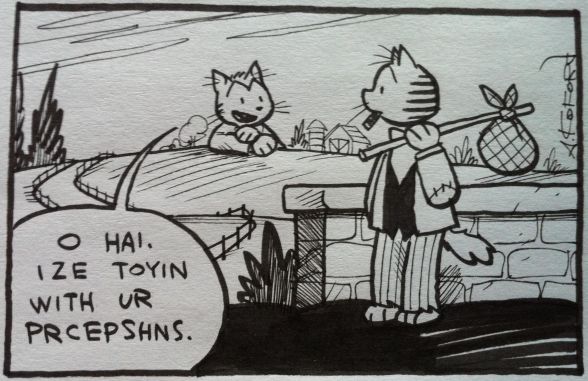A previous post on a continuing education course on cadaver anatomy at Bastyr University came off as too snarky, perhaps because it was too snarky (except to my core audience– hi, mom & dad!). Here’s a more thoughtful rewrite.
“1. No mention that you will be unlikely to find any physical structures in the body related to the flow of qi that is the entire premise of acupuncture.”
There are no physical or biological structures for the conducting of qi. Qi is unlike lymph, blood, and other circulation systems that might be studied in cadaver anatomy. I was referred to the Wikipedia article on Meridians, which has “each meridian corresponding to each organ; nourishing it and extending to an extremity.” This indicates, as I also understand the idea of acupuncture, that there is a flow of something vital to the body’s function through areas of the human body that are the same for everyone. The standard acupuncture points, meridians, and places through which this energy flows in the practice of acupuncture could certainly be indicated during the cadaver dissection process, but there would be no physical structures to be studied as a part of this, unlike other bodily systems which may require medical intervention, such as the digestive, pulmonary, or circulatory systems. In light of this, I wondered how cadaver anatomy could expand the future practitioner’s understanding of acupuncture.
“2. The instructor is a DVM!”
A sarcastic point, implying that perhaps this was as close as the institution could come to someone with a training in medical sciences. Bastyr does, in fact, have MDs on staff who could certainly teach an anatomy lab. I was wrong and I’m sure Dr. Love is perfectly competent in teaching, no matter her background.
“3. ‘Please note that Dr. Love is sensitive to your concerns about mortality and the body as a vessel of the spirit.’ Yep.”
This seemed to merely be a particularly flowery way of acknowledging that students may be creeped out and that this is ok. It is certainly ok, but brings up some of the problems involved in having a continuing education course marketed to, in addition to health care workers, “massage therapists, acupuncturists, yoga and Pilates instructors, [and] fitness trainers.” The only reason I became aware of this course is that a stack of Bastyr’s continuing education and evening courses for the general public is distributed to public buildings four times a year. Is this use of human tissue appropriate in the training of people unlikely to encounter or be able to influence physical structures aside from skin and muscle? Is it appropriate to advertise this class to the general public? I also (perhaps inappropriately) felt that this was implying a contrast to similar courses in other medical schools. They also treat the former person with respect. For the thoughtful and compassionate approach of many medical schools, take a look at Mary Roach’s excellent book Stiff.
“4. There is no herbal remedy for exposure to formaldehyde, so you’ll have to wear a respirator.”
Someone pointed out that there is no standard medical remedy for exposure to formaldehyde. Yes. This is true. I was, instead, hoping to highlight that there are not herbal remedies for everything. Actual physically measurable and testable ways to avoid exposure to harmful substances are far more effective. For most illnesses, when a safe and effective treatment is able to provide a full cure and recovery, the alternatives will (usually, but not always) melt away. Post antibiotics, there are far fewer ads for miracle cures for syphilis than in the early 1900s.
“anti-science”
While the alternative care modalities taught at Bastyr are not attempting to eliminate science-based medicine, they often operate in ways that are strikingly unlike it. Ancient medical systems (such as Traditional Chinese Medicine) and more recent American and European innovations (such as Naturopathy and herbal medicine) do not make an effort to change and improve with new evidence of effectiveness or patient injury as other areas of medicine do. The (always delightful) Mark Crislip has an excellent article on this difference. Science is willing to change its premises with new evidence and seeks that evidence constantly. Perhaps anti-science is an inappropriate label for the medicine taught at Bastyr, but science is as well. Does their coursework change as the evidence against each treatment mounts?
“The local alternative medicine college…”
This was interpreted as being a negative, but I only meant it to be descriptive. Bastyr is local and is a university of colleges.
For further reading, there is a helpful overview of the problematic nature of the clinical research on acupuncture at the Science Based Medicine Blog’s reference section.
I can become jokey about topics that make me uncomfortable. I am made quite uncomfortable by the money, effort, and lives spent by people hoping to help who are left with little more to offer than placebos. Many supporters of these modalities attempt to make themselves immune to change, immune to criticism, and immune to any evidence of being ineffective or causing harm. Alternative treatments can make both patients and practitioners feel good but there is a cost both financial and physical, even aside from the vicious or deluded who promise a cure to the incurable or to those with difficult treatment ahead.
